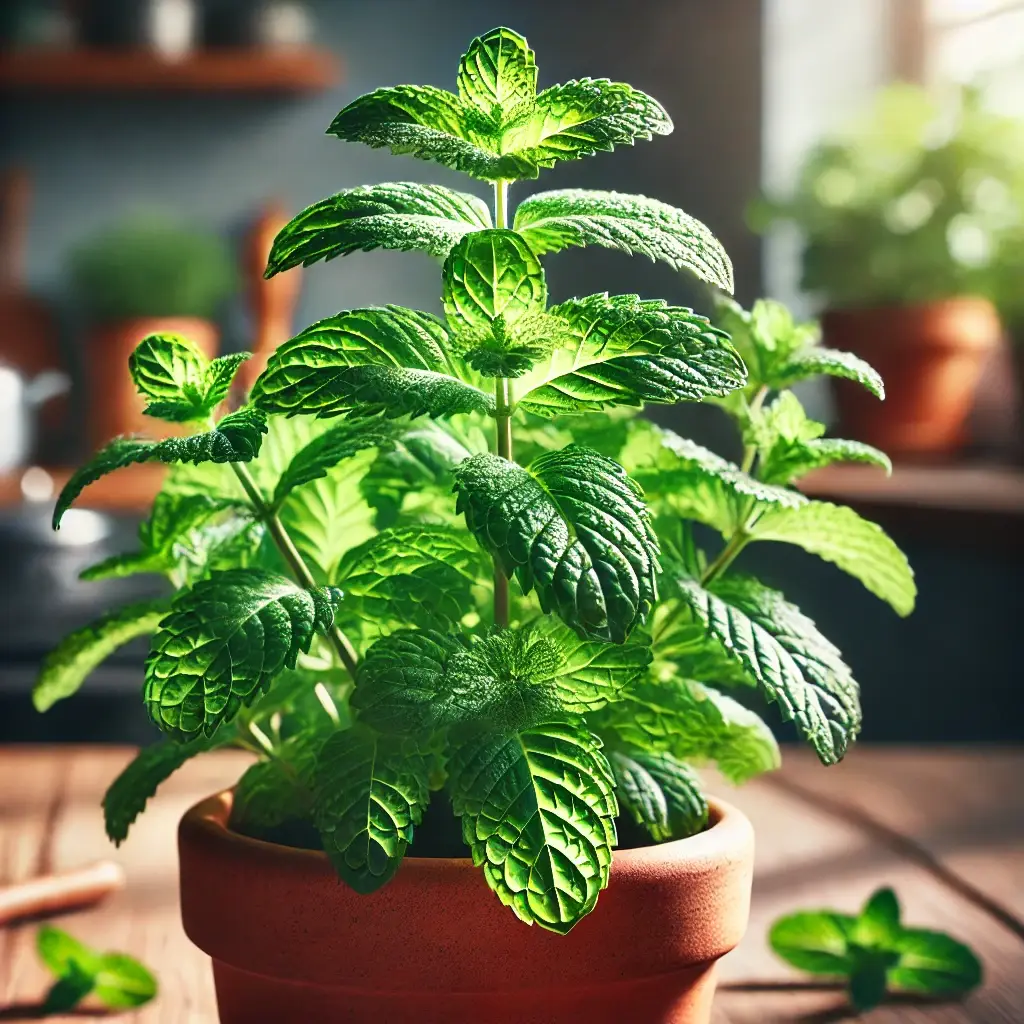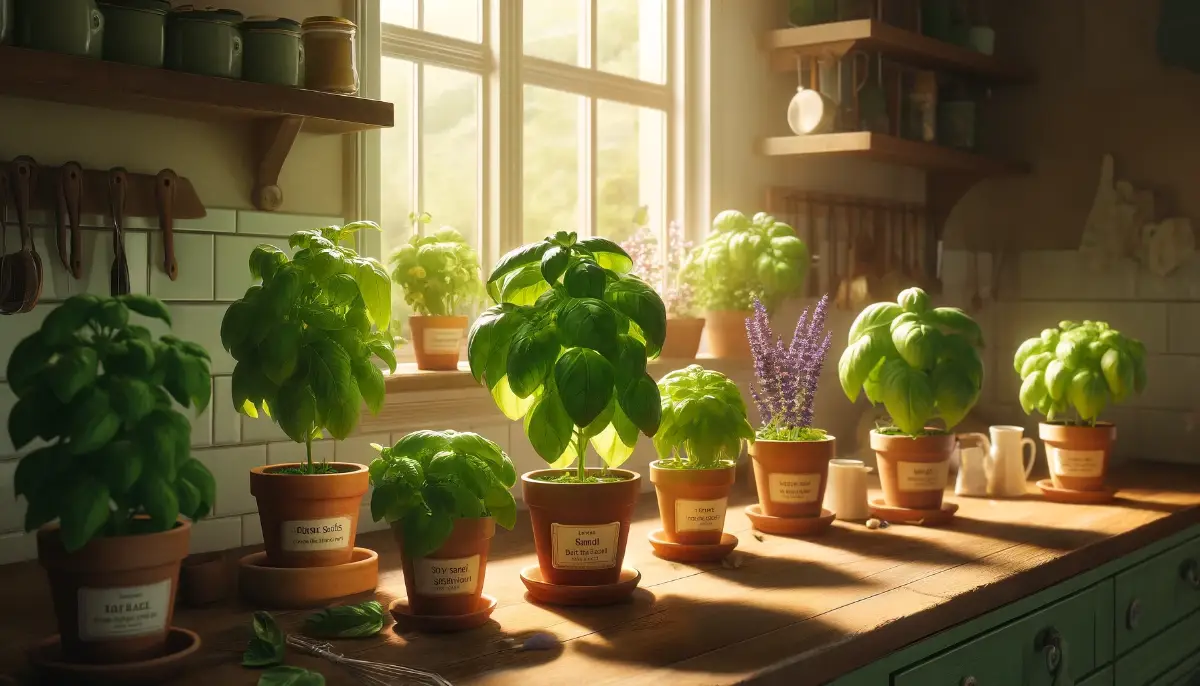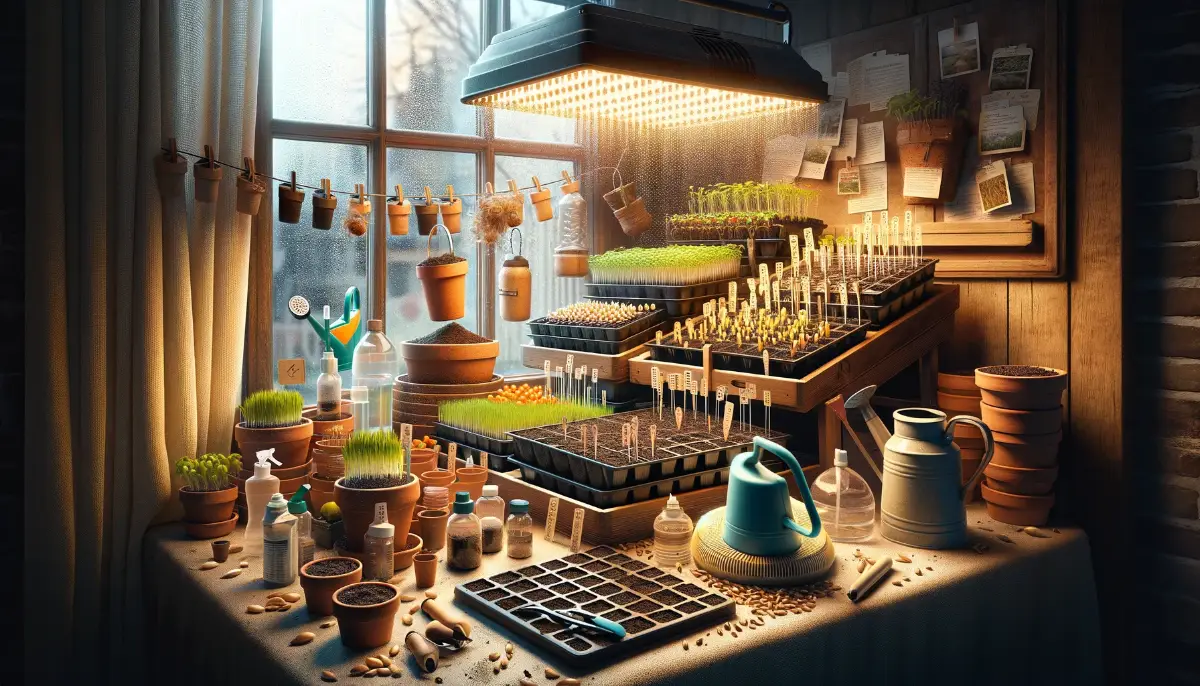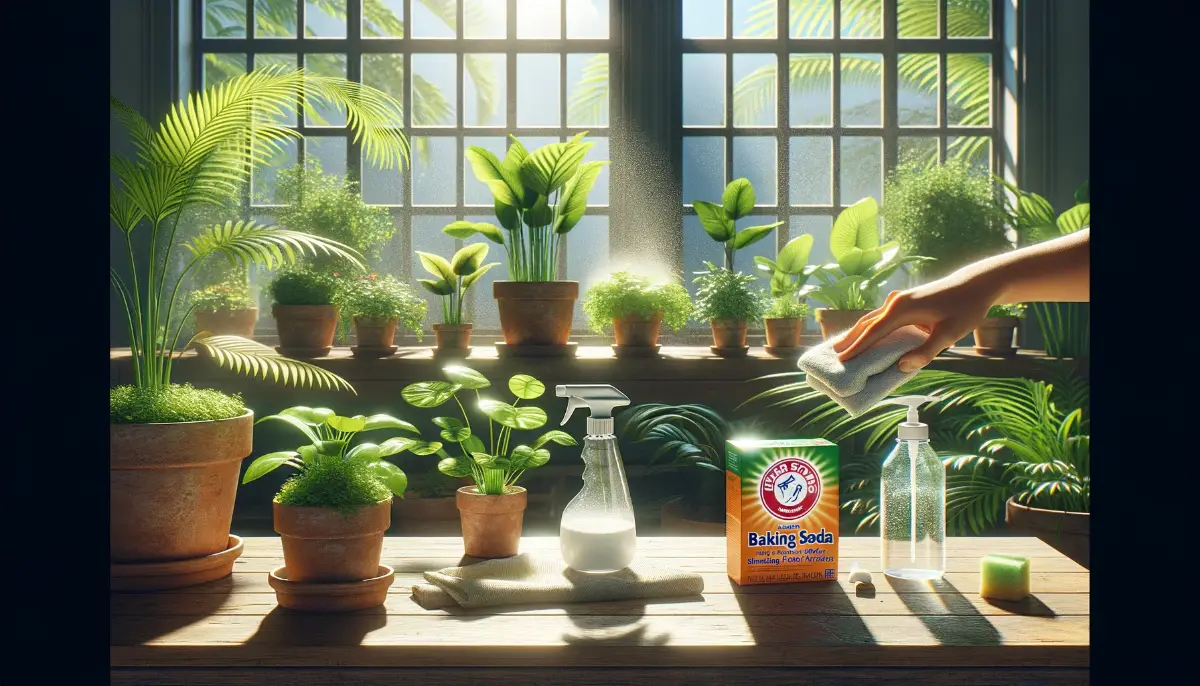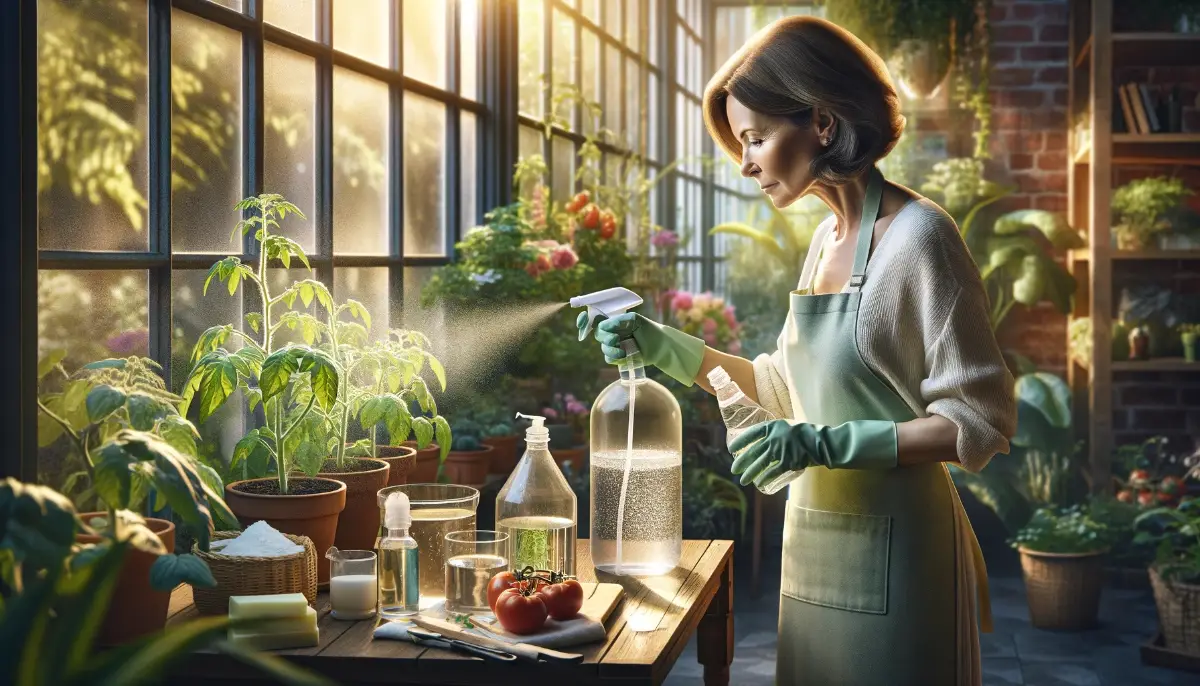Mint is a perennial herb from the genus Mentha, known for its aromatic leaves and various species, such as peppermint and spearmint. This herb is widely used in cooking, beverages, and natural remedies due to its distinctive flavor and therapeutic properties.
- Mint is a versatile herb that can be grown both indoors and outdoors.
- Proper care involves understanding light, water, soil, and pest management.
- Regular pruning and harvesting encourage healthy growth.
Choosing the Right Mint Variety for Your Needs
Selecting the appropriate mint variety is crucial to meet your culinary, medicinal, or aesthetic needs. There are several types of mint, each with unique characteristics:
- Peppermint (Mentha x piperita): Strong menthol flavor, ideal for teas and desserts.
- Spearmint (Mentha spicata): Milder, sweeter taste, perfect for cooking and cocktails.
- Chocolate Mint (Mentha x piperita ‘Chocolate’): Subtle chocolate aroma, excellent for flavoring treats.
- Apple Mint (Mentha suaveolens): Fruity, apple-like scent, great for garnishes and salads.
Consider your specific needs and preferences when choosing the variety to grow. Peppermint is excellent for those who enjoy a strong, cooling flavor, while spearmint suits a broader range of culinary applications.
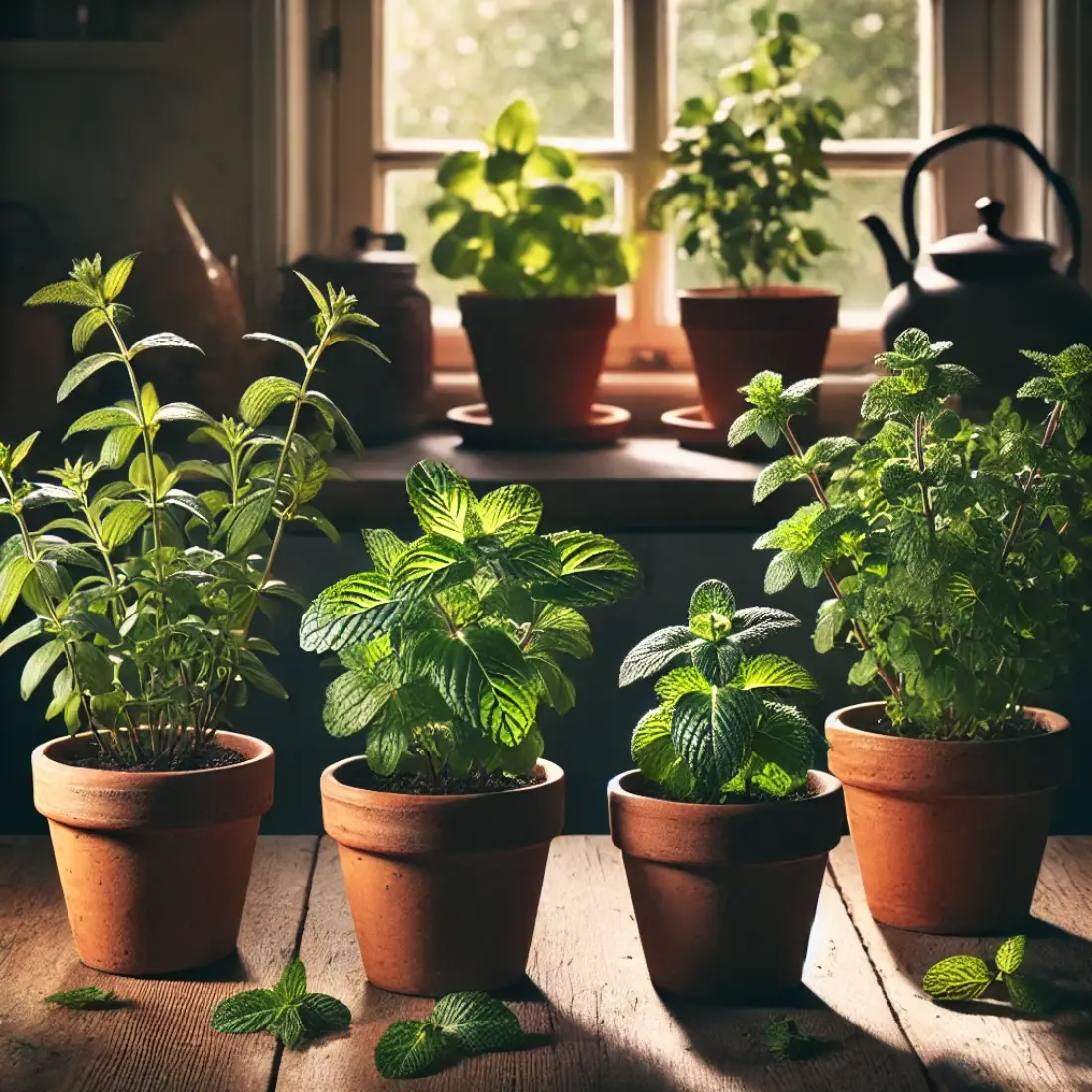
Growing Mint Outdoors
Ideal Outdoor Conditions
Growing mint outdoors requires understanding the optimal conditions for this herb to thrive.
- Temperature: Mint prefers cooler climates but can tolerate a wide range of temperatures. Ideal growth occurs between 55-70°F (13-21°C).
- Frost: Mint is hardy and can survive light frosts, but heavy frost can damage the plant.
- Light Requirements: Mint grows best in partial shade, receiving about 3-4 hours of direct sunlight per day. It can tolerate full sun if the soil remains consistently moist.
- Moisture: Mint prefers consistently moist soil. Ensure the soil does not dry out, especially during hot weather.
Preparing the Soil
Mint thrives in nutrient-rich, well-draining soil. Proper soil preparation is crucial for healthy growth.
Soil Type:
- Composition: Use loamy or sandy soil enriched with organic matter. Mint doesn’t do well in heavy clay soils.
- Drainage: Ensure good drainage to prevent root rot. If your soil is heavy, consider planting mint in raised beds or containers.
- Ideal Range: Mint prefers a slightly acidic to neutral pH between 6.0 and 7.0. Test the soil pH and amend with lime or sulfur as needed.
- Organic Matter: Incorporate compost or well-rotted manure into the soil before planting to provide essential nutrients.
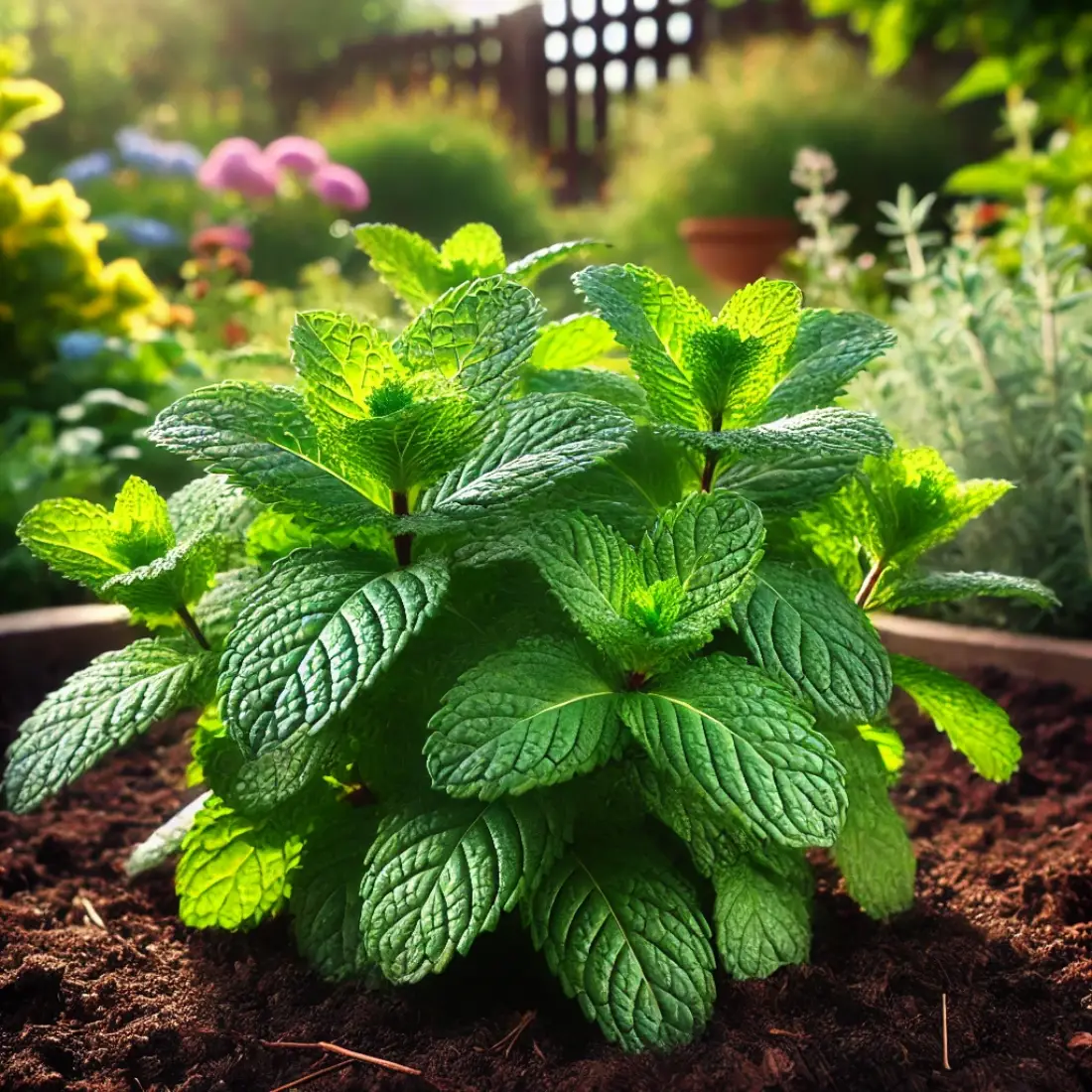
Planting Techniques
Successful mint planting involves choosing the right method and timing.
- Seeds: While growing mint from seeds is possible, it can be slow and inconsistent. Using transplants or cuttings is often more reliable.
- Transplants: Purchase healthy young plants from a nursery or use cuttings from an established plant.
Planting Process:
- Spacing: Space mint plants about 18-24 inches apart to allow for adequate air circulation and growth.
- Depth: Plant mint at the same depth it was growing in its original container. Cover the roots and firm the soil gently around the plant.
- Watering: Water thoroughly after planting to settle the soil and eliminate air pockets.
Watering Requirements
- Frequency: Water mint regularly to keep the soil consistently moist but not waterlogged. During dry periods, increase the watering frequency.
- Method: Water at the base of the plant to avoid wetting the leaves, which can lead to fungal diseases.
Fertilizing Mint
- Type of Fertilizer: Use a balanced, water-soluble organic fertilizer once a month during the growing season.
- Application Timing: Apply fertilizer in the early morning or late afternoon to avoid leaf burn.
Managing Pests and Diseases
- Common Pests: Aphids, spider mites, and whiteflies can affect mint. Use insecticidal soap or neem oil to manage these pests.
- Diseases: Mint can suffer from mint rust, powdery mildew, and leaf spot. Ensure good air circulation and avoid overhead watering to prevent these issues.
- Natural Remedies: Introduce beneficial insects like ladybugs to control pests naturally.
Pruning and Harvesting
- Pruning: Regularly prune mint to encourage bushy growth and prevent legginess. Trim back about one-third of the plant every few weeks.
- Harvesting: Harvest mint leaves as needed. For a large harvest, cut the stems just above a leaf node to promote new growth. The best time to harvest is in the morning after the dew has dried.
Growing Mint Indoors
Choosing the Right Pot
Selecting the appropriate pot is essential for growing healthy mint indoors.
Size:
- Diameter: Choose a pot at least 12 inches in diameter to accommodate the plant’s root system and allow for adequate growth.
- Depth: A pot with a depth of 8-10 inches is ideal for mint’s shallow roots.
Material:
- Options: Pots can be made of clay, or ceramic. Each material has its benefits – clay or ceramic pots offering better stability and aesthetic appeal.
- Drainage: Ensure the pot has sufficient drainage holes at the bottom to prevent waterlogging and root rot.
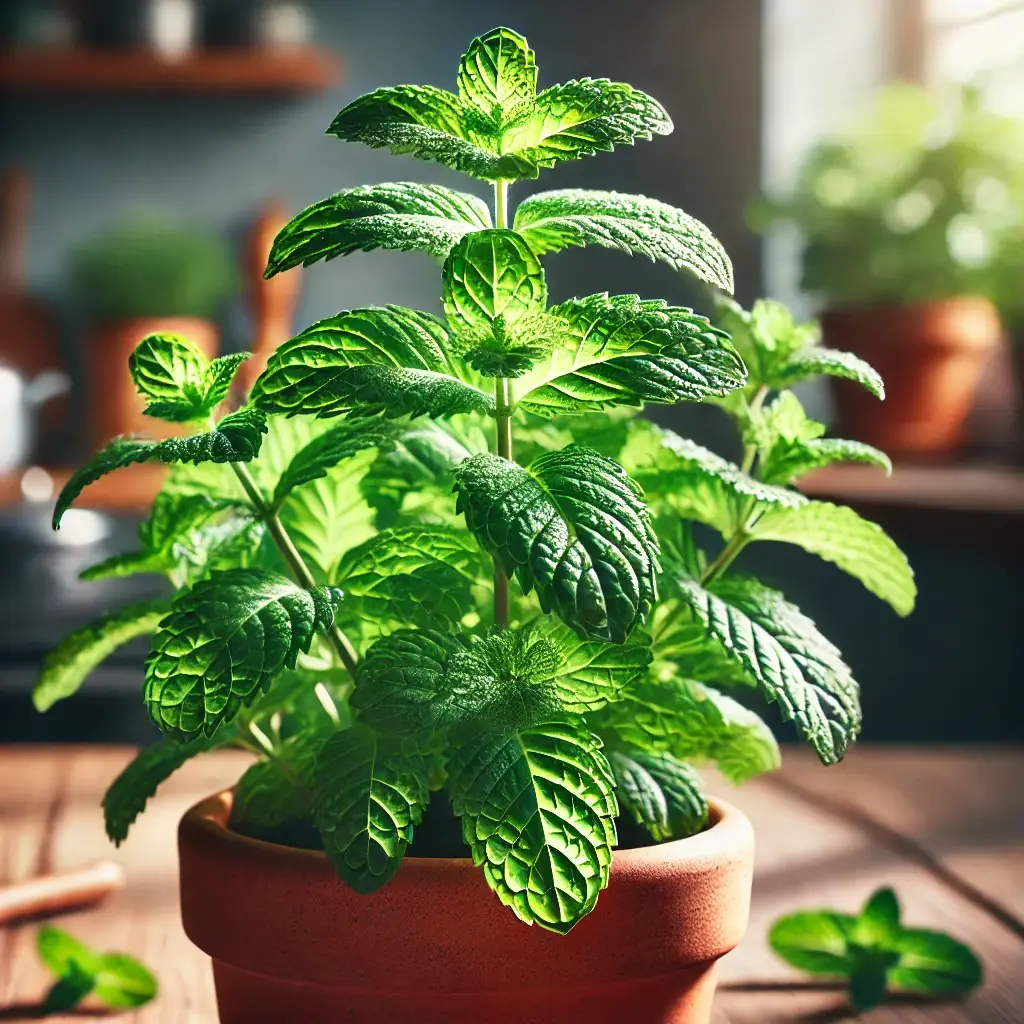
Drainage:
- Drainage Holes: Adequate drainage is crucial. Use pots with multiple holes to ensure excess water can escape.
- Saucer: Place a saucer under the pot to catch excess water, preventing spills on your indoor surfaces.
Creating the Perfect Indoor Environment
Creating the ideal indoor environment is key to thriving mint plants.
- Sunlight: Mint requires bright, indirect light for at least 4-6 hours a day. Place the pot near a south or west-facing window.
- Supplemental Lighting: If natural light is insufficient, use grow lights to provide the necessary light spectrum and intensity.
- Optimal Range: Maintain an indoor temperature between 65-70°F (18-21°C) for the best growth.
- Avoid Extremes: Keep mint away from drafts, radiators, and air conditioning vents to prevent stress from temperature fluctuations.
- Preferred Level: Mint prefers moderate humidity levels. If indoor air is dry, increase humidity using a humidifier or a humidity tray.
- Misting: Regularly mist the leaves to keep them hydrated and prevent the edges from drying out.
Planting Techniques for Indoors
Planting mint indoors involves specific techniques to ensure successful growth.
- Seeds: Starting mint from seeds is possible but slow. Transplants or cuttings are quicker and more reliable.
- Transplants: Purchase young plants or use cuttings from an existing mint plant for faster results.
Planting Process:
- Soil Preparation: Use a well-draining potting mix rich in organic matter. Avoid heavy garden soil that can compact and hinder root growth.
- Planting Depth: Plant mint at the same depth it was growing in its original container. Ensure the roots are covered and the soil is firmly packed around the base.
- Watering: Water thoroughly after planting to settle the soil and help establish the roots.
Watering Indoor Mint
- Frequency: Water mint regularly to keep the soil consistently moist but not soggy. Check the top inch of soil; if it feels dry, it’s time to water.
- Method: Use a watering can with a fine rose to water gently at the base, avoiding water on the leaves to prevent fungal issues.
Fertilizing Indoor Mint
- Type of Fertilizer: Use a balanced, water-soluble organic fertilizer once a month during the growing season.
- Application Timing: Apply fertilizer in the early morning or late afternoon to avoid leaf burn. Dilute the fertilizer to half-strength to prevent over-fertilizing.
Pest and Disease Management Indoors
- Common Pests: Indoors, mint can be affected by aphids, spider mites, and whiteflies. Inspect the plants regularly and use insecticidal soap or neem oil to manage infestations.
- Diseases: Mint can suffer from powdery mildew and root rot. Ensure good air circulation and avoid overwatering to prevent these issues.
- Prevention: Clean the pots and tools regularly to prevent the spread of diseases. Remove any diseased or dead leaves immediately.
Pruning and Harvesting Indoor Mint
- Pruning: Regularly prune mint to maintain its shape and encourage bushy growth. Trim back about one-third of the plant every few weeks.
- Harvesting: Harvest mint leaves as needed. For a larger harvest, cut the stems just above a leaf node to promote new growth. The best time to harvest is in the morning after the dew has dried.
Proper indoor care ensures your mint plants remain healthy and productive, providing a continuous supply of fresh leaves for culinary and medicinal use.
Troubleshooting Common Problems
Yellowing Leaves
Yellowing leaves on your mint plant can be a sign of several issues.
Causes:
- Overwatering: Too much water can lead to root rot, causing the leaves to turn yellow. Ensure the soil drains well and avoid waterlogging.
- Nutrient Deficiency: Lack of essential nutrients, particularly nitrogen, can cause yellowing. Use a balanced fertilizer to provide necessary nutrients.
- Pests: Aphids and spider mites can cause leaves to yellow. Inspect your plants regularly and use insecticidal soap or neem oil to manage infestations.
Solutions:
- Adjust Watering: Water the mint only when the top inch of soil feels dry. Ensure the pot has good drainage.
- Fertilize Properly: Apply a balanced, water-soluble organic fertilizer every 4-6 weeks.
- Manage Pests: Remove pests manually or treat with appropriate pest control methods.
Stunted Growth
Stunted growth in mint plants can result from various factors.
Possible Reasons:
- Poor Soil Quality: Inadequate nutrients in the soil can hinder growth. Enrich the soil with compost or a balanced fertilizer.
- Insufficient Light: Mint needs sufficient light to grow well. Ensure the plant gets at least 4-6 hours of bright, indirect sunlight daily.
- Crowded Roots: Mint needs space to grow. Ensure the pot is large enough and the roots are not cramped.
Fixes:
- Improve Soil: Use a high-quality potting mix and supplement with compost or organic matter.
- Increase Light: Place the plant in a well-lit area or use grow lights if necessary.
- Repot if Necessary: If the roots are crowded, repot the plant into a larger container.
Mint Rust and Other Diseases
Mint rust and other diseases can severely affect your mint plant’s health.
Identification:
- Mint Rust: Look for small, orange spots on the undersides of leaves. This fungal disease can spread rapidly if not managed.
- Powdery Mildew: White, powdery spots on the leaves indicate this common fungal issue, especially in humid conditions.
- Leaf Spot: Dark, water-soaked spots on leaves are signs of bacterial or fungal leaf spot.
Treatment:
- Mint Rust: Remove affected leaves and destroy them. Avoid overhead watering to keep foliage dry.
- Powdery Mildew: Increase air circulation around the plant. Remove affected leaves and treat with a fungicide if needed.
- Leaf Spot: Prune and discard infected leaves. Ensure proper spacing and avoid overhead watering.
Preventative measures, such as proper watering, good air circulation, and regular inspection, can help keep your mint plant healthy and free from diseases.
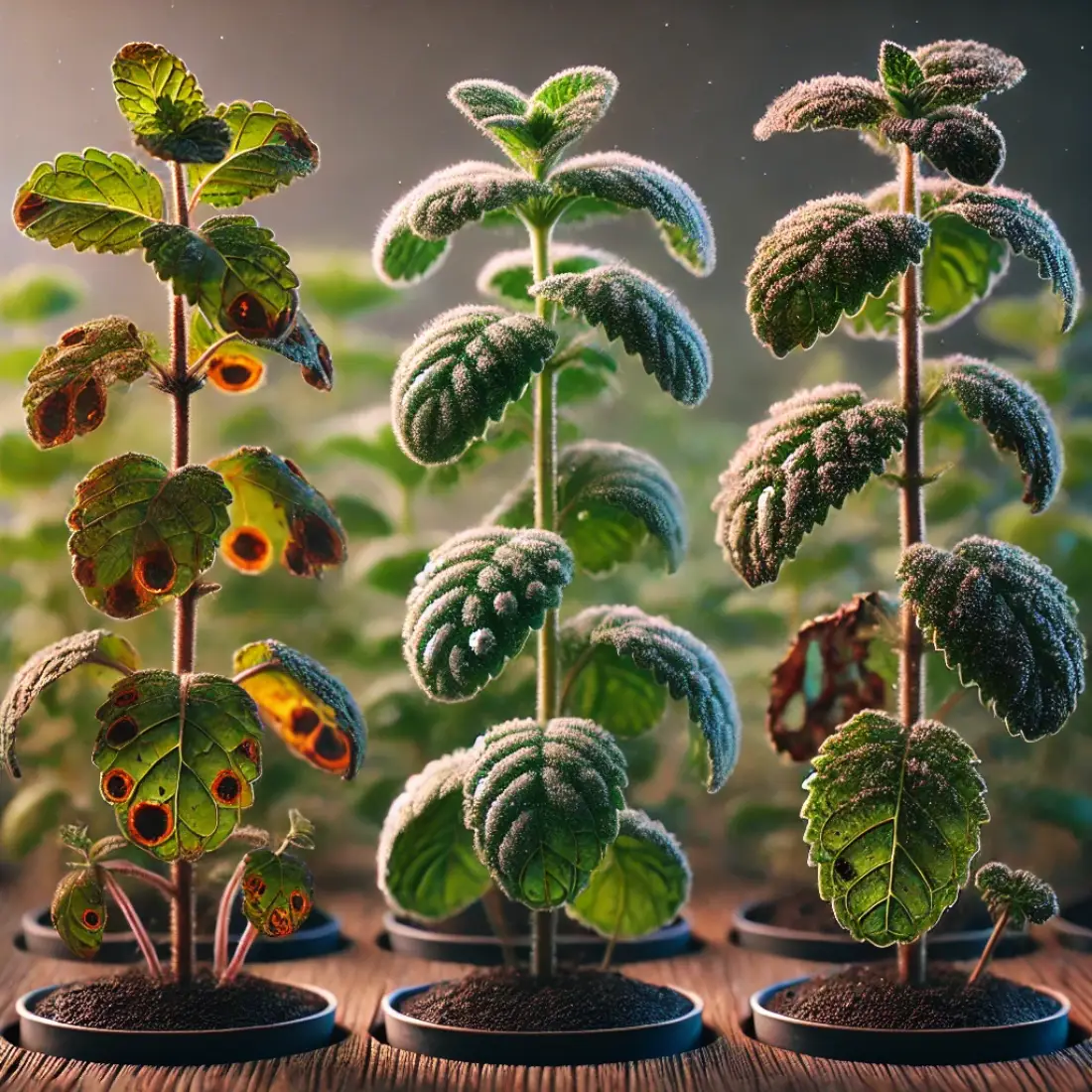
Maximizing Mint Yield
Companion Planting
Companion planting is a great way to maximize the yield and health of your mint plants. Planting mint alongside certain other plants can offer mutual benefits.
Beneficial Plants:
- Cabbage: Mint repels cabbage moths and other pests that affect cabbage.
- Tomatoes: Mint deters aphids, whiteflies, and other pests that harm tomatoes.
- Carrots: Mint helps repel carrot flies and can enhance the flavor of carrots.
Planting Tips:
- Separation: Ensure that mint is planted in a contained space or pot to prevent it from becoming invasive and overtaking neighboring plants.
- Diversity: Plant a variety of companion plants around mint to create a balanced ecosystem that supports pest control and healthy growth.
Extending the Growing Season
To maximize your mint yield, consider techniques to extend the growing season, allowing for a longer harvest period.
Techniques:
- Mulching: Apply mulch around mint plants to retain soil moisture and regulate temperature, extending the growing season into cooler months.
- Cold Frames: Use cold frames or cloches to protect mint from frost, allowing you to harvest fresh leaves even in late fall.
- Indoor Growth: Start mint plants indoors early in the spring and move them outside after the last frost. This gives the plants a head start on the growing season.
Maintenance:
- Consistent Care: Continue to water, fertilize, and prune your mint plants regularly to keep them healthy and productive throughout the extended season.
- Protection: Monitor for pests and diseases more frequently during extended seasons to address any issues promptly.
Propagating Mint
Propagating mint is an effective way to increase your mint yield without purchasing new plants.
Methods:
- Stem Cuttings: This is the most common and easiest method. Cut a 4-6 inch stem from a healthy mint plant, remove the lower leaves, and place the cutting in water. Once roots develop (in about a week), transplant the cutting into soil.
- Division: Divide mature mint plants to propagate new plants. Carefully dig up the plant and separate the root ball into smaller sections, ensuring each section has healthy roots and stems. Replant the divisions in pots or the garden.
- Layering: Bend a stem to the ground and cover a section with soil, leaving the tip exposed. The covered section will develop roots in a few weeks, after which you can cut and transplant it.
Tips for Success:
- Healthy Parent Plants: Always use healthy, vigorous plants for propagation to ensure the new plants are strong and disease-free.
- Proper Environment: Ensure that new cuttings or divisions are placed in an optimal growing environment with adequate light, water, and nutrients.
FAQs about Caring for Mint
How often should I water my mint plants?
Mint prefers consistently moist soil, so water your mint plants when the top inch of soil feels dry. Avoid letting the soil dry out completely, but also ensure it’s not waterlogged to prevent root rot.
Can I grow mint from cuttings?
Yes, mint is easily propagated from cuttings. Simply cut a 4-6 inch stem from a healthy plant, remove the lower leaves, and place the cutting in water until roots form. Then, transplant it into soil.
What type of soil is best for mint?
Mint thrives in well-draining, nutrient-rich soil with a pH between 6.0 and 7.0. A mix of potting soil and compost is ideal for providing the necessary nutrients and drainage.
How much sunlight does mint need?
Mint grows best in partial shade to full sun. Indoors, place it near a bright, indirect light source. Outdoors, ensure it receives 3-4 hours of direct sunlight daily, with some afternoon shade in hotter climates.
How do I prevent my mint from becoming invasive?
To prevent mint from spreading uncontrollably, plant it in a container or use barriers in your garden. Regular pruning and harvesting can also help control its growth.
What are common pests that affect mint plants?
Common pests that affect mint include aphids, spider mites, and whiteflies. Regularly inspect your plants and use insecticidal soap or neem oil to manage infestations.
How can I prevent mint diseases?
Prevent mint diseases by ensuring good air circulation, avoiding overhead watering, and keeping the soil well-drained. Remove any diseased or damaged leaves immediately to prevent the spread of infection.
Can I grow mint indoors all year round?
Yes, mint can be grown indoors year-round if provided with sufficient light, water, and nutrients. Use grow lights to supplement natural light during the winter months.
How do I harvest mint without harming the plant?
Harvest mint leaves by cutting the stems just above a leaf node, which encourages new growth. Avoid removing more than one-third of the plant at a time to maintain its health and vigor.
What should I do if my mint leaves turn yellow?
Yellowing leaves can be caused by overwatering, nutrient deficiency, or pests. Adjust your watering schedule, fertilize appropriately, and inspect the plant for pests to address the issue.

